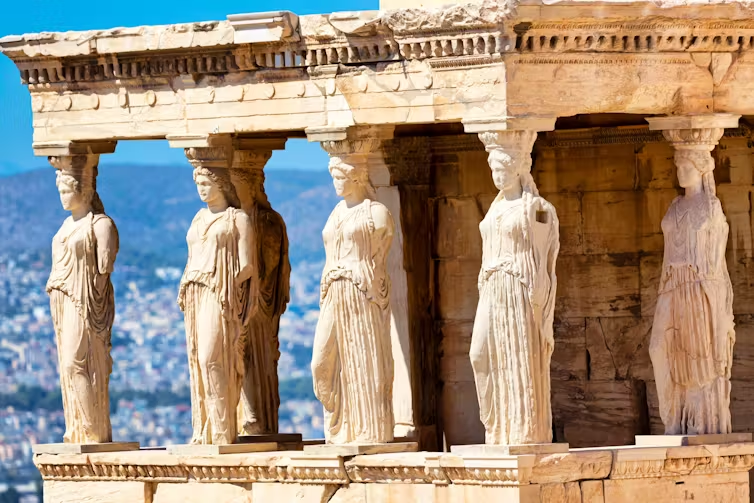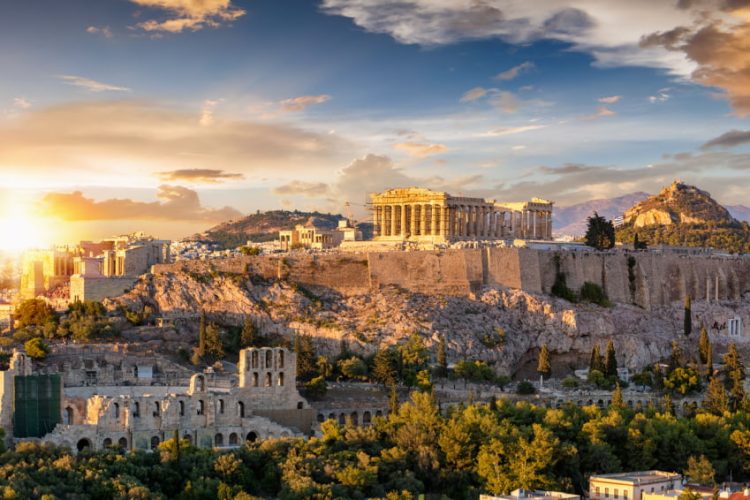Greece is a country that is synonymous with ancient history, and its archaeological sites stand as testaments to a civilization that has profoundly shaped Western culture, philosophy, and governance. From the imposing ruins of Athens to the tranquil remnants of Delphi, ancient Greece’s ruins are among the most significant historical landmarks in the world. Whether you’re a history buff, an art lover, or simply a traveler looking to explore the beauty of the past, these ruins offer a captivating glimpse into one of the most influential civilizations in human history.
In this guide, we’ll take you through the most awe-inspiring ruins of Ancient Greece, showcasing their historical significance, unique architecture, and the stories that bring them to life.
1. Athens: The Heart of Ancient Greece
No trip to Greece would be complete without a visit to its capital, Athens, which was once the center of ancient Greek civilization. The city is home to some of the most iconic ruins, most notably the Acropolis of Athens, a symbol of the cultural and political achievements of Ancient Greece.
Acropolis of Athens: The Pinnacle of Ancient Greek Architecture
The Acropolis is perhaps the most famous archaeological site in Greece. Sitting atop a rocky hill, the Acropolis houses several important structures, including the Parthenon, the Temple of Athena Nike, and the Erechtheion. The Parthenon, dedicated to the goddess Athena, is a magnificent example of Doric architecture and stands as a symbol of ancient Greek glory. The temple was constructed in the 5th century BCE during the height of the Athenian Empire and remains a marvel of engineering and artistry.
Visitors can climb the steps leading up to the Acropolis, taking in panoramic views of Athens and reflecting on the rich history that unfolded within these walls. The Acropolis Museum, located at the foot of the hill, offers further insight into the history and significance of these ruins, displaying ancient artifacts, sculptures, and relics.
Ancient Agora: The Birthplace of Democracy
Just below the Acropolis, the Ancient Agora is a sprawling archaeological site that was once the heart of daily life in Athens. It was here that the ancient Greeks gathered to discuss philosophy, politics, and civic life. The Temple of Hephaestus, one of the best-preserved ancient Greek temples, stands proudly in the Agora, showcasing the beauty of classical architecture.
The Stoa of Attalos, reconstructed in the 1950s, now houses the Museum of the Ancient Agora, where visitors can learn about the social and political life of ancient Athenians. A walk through the Agora provides a fascinating glimpse into the origins of democracy and the role Athens played in shaping the Western world.
2. Delphi: The Center of the World
Located on the slopes of Mount Parnassus, Delphi was once considered the center of the ancient world, known as the omphalos (navel) of the earth. The ancient Greeks believed that Delphi was the most sacred place on earth, where the gods spoke through the Oracle of Delphi.
Temple of Apollo: A Sacred Sanctuary
The Temple of Apollo is the central structure of Delphi and one of the most important ruins in Greece. It was here that the Oracle, a priestess known as the Pythia, would deliver prophecies believed to be inspired by the god Apollo. Pilgrims from all over the ancient world visited Delphi to seek guidance on matters of life, war, and politics.
The Theatre of Delphi, which seats up to 5,000 people, is another remarkable site within the complex. The theatre once hosted dramatic performances and musical contests, and its location offers breathtaking views of the surrounding landscape. Today, Delphi’s archaeological site, along with the Delphi Archaeological Museum, is a UNESCO World Heritage site and one of the most significant destinations for those interested in Greek history and mythology.
3. Olympia: The Birthplace of the Olympic Games
Situated in the western part of the Peloponnese Peninsula, Olympia is famous as the birthplace of the Olympic Games, the most important athletic competition in the ancient world. The site was a religious center dedicated to Zeus, the king of the gods.
Ancient Stadium: A Place of Competition and Glory
The Ancient Stadium of Olympia is the focal point of the archaeological site and is where the first Olympic Games were held in 776 BCE. Visitors can walk along the track where ancient athletes once competed in footraces, chariot races, and other athletic events. The Temple of Zeus, one of the most impressive structures in Olympia, housed the Statue of Zeus, a wonder of the ancient world created by the sculptor Phidias.
The ruins of Olympia also include the Temple of Hera, the Palestra (wrestling school), and the Gymnasium, where athletes trained for the games. The Archaeological Museum of Olympia displays many of the site’s artifacts, including sculptures and friezes from the Temple of Zeus, giving visitors a deeper understanding of Olympia’s role in ancient Greek culture.

4. Mycenae: The Home of King Agamemnon
Located in the northeastern part of the Peloponnese, Mycenae is one of Greece’s most important archaeological sites, once a major center of the Mycenaean civilization. The ruins here date back to the 16th century BCE and are linked to the legendary King Agamemnon of Homer’s Iliad.
The Lion Gate: A Monumental Entrance
The most famous feature of Mycenae is the Lion Gate, an imposing entrance that features a relief of two lions standing guard. This monumental structure is a symbol of Mycenaean power and artistry, as it was one of the first examples of monumental stone architecture in the ancient Greek world.
Inside the citadel, visitors can explore the Palace of Agamemnon, where the king is said to have ruled, and the Treasury of Atreus, a beehive-shaped tomb that dates back to the 13th century BCE. The site also includes the Royal Tombs, where many of the elite Mycenaeans were buried with treasures that reflect the wealth and power of the city.
5. Knossos: The Minoan Civilization on Crete
On the island of Crete, the ancient city of Knossos is the largest archaeological site of the Minoan civilization, which flourished between the 15th and 12th centuries BCE. The ruins of Knossos are particularly famous for their elaborate palace complex, which showcases the advanced architectural and artistic skills of the Minoans.
The Palace of Knossos: A Labyrinth of Beauty
The Palace of Knossos is a vast complex that includes several stories, courtyards, frescoes, and rooms. The palace’s most famous feature is its intricate layout, which is thought to have inspired the myth of the Minotaur and the labyrinth. Visitors can walk through the restored areas of the palace, marveling at the vibrant frescoes depicting scenes of daily life, bull-leaping, and religious ceremonies.
The site also includes the Throne Room, where the King of Knossos is believed to have held court, and the Royal Apartments, where elite Minoans once resided. The Heraklion Archaeological Museum on Crete houses many artifacts from the site, including pottery, sculptures, and fresco fragments.
6. Epidaurus: The Birthplace of Healing and Theater
Located in the Peloponnese, Epidaurus is an ancient sanctuary dedicated to Asclepius, the god of healing. This site was renowned for its therapeutic qualities and attracted pilgrims from all over the ancient world seeking cures for various ailments.
The Theatre of Epidaurus: A Marvel of Acoustic Engineering
The Theatre of Epidaurus is one of the best-preserved ancient theaters in Greece and is renowned for its extraordinary acoustics. The theater, built in the 4th century BCE, could hold up to 14,000 spectators, and its design allows even the faintest sound on stage to be heard clearly from the top row. The theater is still used for performances today, offering visitors a chance to experience ancient Greek drama in a truly historic setting.
In addition to the theater, the sanctuary includes the Temple of Asclepius, where sick individuals would come to pray for healing, and the Stadium, where athletic events were held. The Epidaurus Archaeological Museum showcases artifacts from the site, including medical instruments used in ancient treatments.
Conclusion: A Journey Through Ancient Greece
Exploring the ruins of ancient Greece offers a fascinating glimpse into the culture, religion, and daily life of one of the most influential civilizations in history. From the monumental temples of Athens to the mystical Oracle at Delphi, each site tells a unique story that has shaped the world we live in today. Whether you’re exploring the birthplace of the Olympic Games, wandering the ruins of Mycenae, or marveling at the frescoes of Knossos, Greece’s ancient ruins offer an unforgettable journey through time.





















